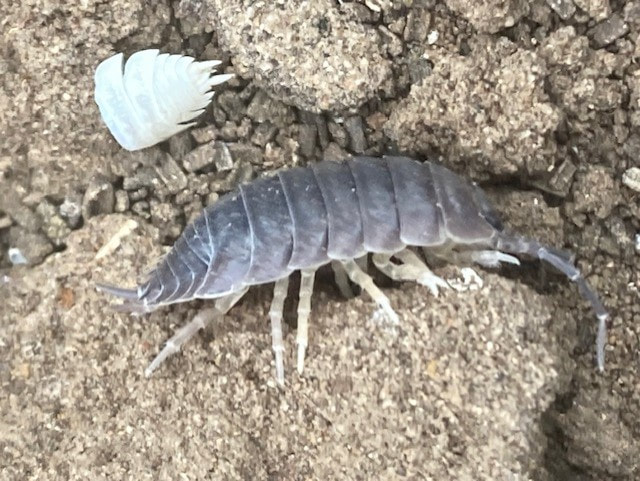A Woodlouse is a Crustacean that gets their name from being found in old wood. They have many names the world over and you may know the creature in the photo by an entirely different name as I do. In fact I've only ever known them as Slaters from where I'm from and while I've heard of Woodlice I never knew this was one before reading about them for this article!!!
Woodlice fossils date back to around 100000 years ago and have endured many changes to the earth in that time.
Some species live in arid deserts while others have returned to aquatic environments.
They eat fungi and rotting plants. They will also eat seedlings and soft fruits although they are considered beneficial in the garden as they turn and aerate the soil and they add compost.
The female Woodlouse will keep fertilized eggs in what is called a marsupium on the underside of her body. A female Woodlouse is also capable of reproducing asexually.
Although they do turn up in human houses they are usually there as they like damp places so you likely have a dampness problem which is Natures way of letting you know so you can repair it.
Please don't kill or harm them.
Below are some ideas on removing them from areas you don't wish them to be.
By the way a group of Woodlice are called a Quabble.
Rather than see them as a pest we should embrace them and see them as fellow Earthlings and amazing little creatures in so very many ways.
The text underlined below is from a UK company that has many non-lethal ways to remove unwanted insects/rodents and keep them out.
The link to them is www.fantasticpestcontrol.co.uk/blog/humane-methods-for-handling-common-household-pests/#
"Since woodlice play an essential role in decomposition, it’s better to remove them from your home rather than kill them. They usually live in damp places, such as piles of leaves, woodpiles, and under rocks, and may occasionally be found indoors.
A woodlice infestation can be the first sign of a damp problem in your home, which is why finding the source and fixing it is crucial. If you see no other evidence of dampness, you should close up any holes, clean your gutters, and remove any rotting plant material from outside your home. Cinnamon, peppermint, citrus, and oregano essential oils are particularly effective in preventing woodlice infestations".
www.countrylife.co.uk/nature/bizarre-world-of-woodlice-164708
KIDS CORNER
www.biokids.umich.edu/critters/Armadillidium_vulgare/
factanimal.com/woodlouse/
www.youtube.com/watch?v=QVkZwv1T3kE
By Brendon Crook

 RSS Feed
RSS Feed